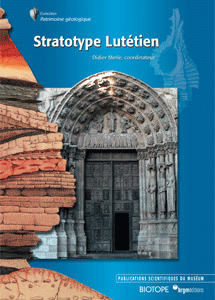
 Volume 1
Volume 1 Published on 30 November 2008
With Ile-de-France as its stratotype region, the Lutetian is an internationally recognized and even famous geological stage. The fossils found in it, the monuments built with stone of that age and the historical figures who took an interest in it all justify this notoriety. In other words, the Giant campanile (one of the largest gastropods the Earth has ever seen), the stones used to build the Notre-Dame Cathedral in Paris and well-known men of science such as Jean-Baptiste Lamarck and Georges Cuvier all point to the splendour and importance of the Lutetian stage in the Paris area. Well documented and richly illustrated, this book summerizes all the knowledge acquired on the Lutetian stage up to the present day.
Didier Merle, lecturer at the Paris Muséum National d’Histoire Naturelle, is a palaeontologist specialized in the molluscs of the Tertiary. He is curator of the Museum’s collection of fossil molluscs, editor-in-chief of the journal Geodiversitas, and chair of the Groupe d’Etude du Cénozoïque.
Out of print, now available in english in digital format (PDF & Epub): Stratotype Lutetian.
MERLE D. (coord.) 2008. — Stratotype Lutétien. Muséum national d'Histoire naturelle, Paris ; Biotope, Mèze ; BRGM, Orléans, 288 p. (Patrimoine géologique ; 1).
